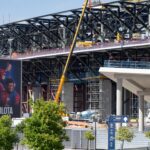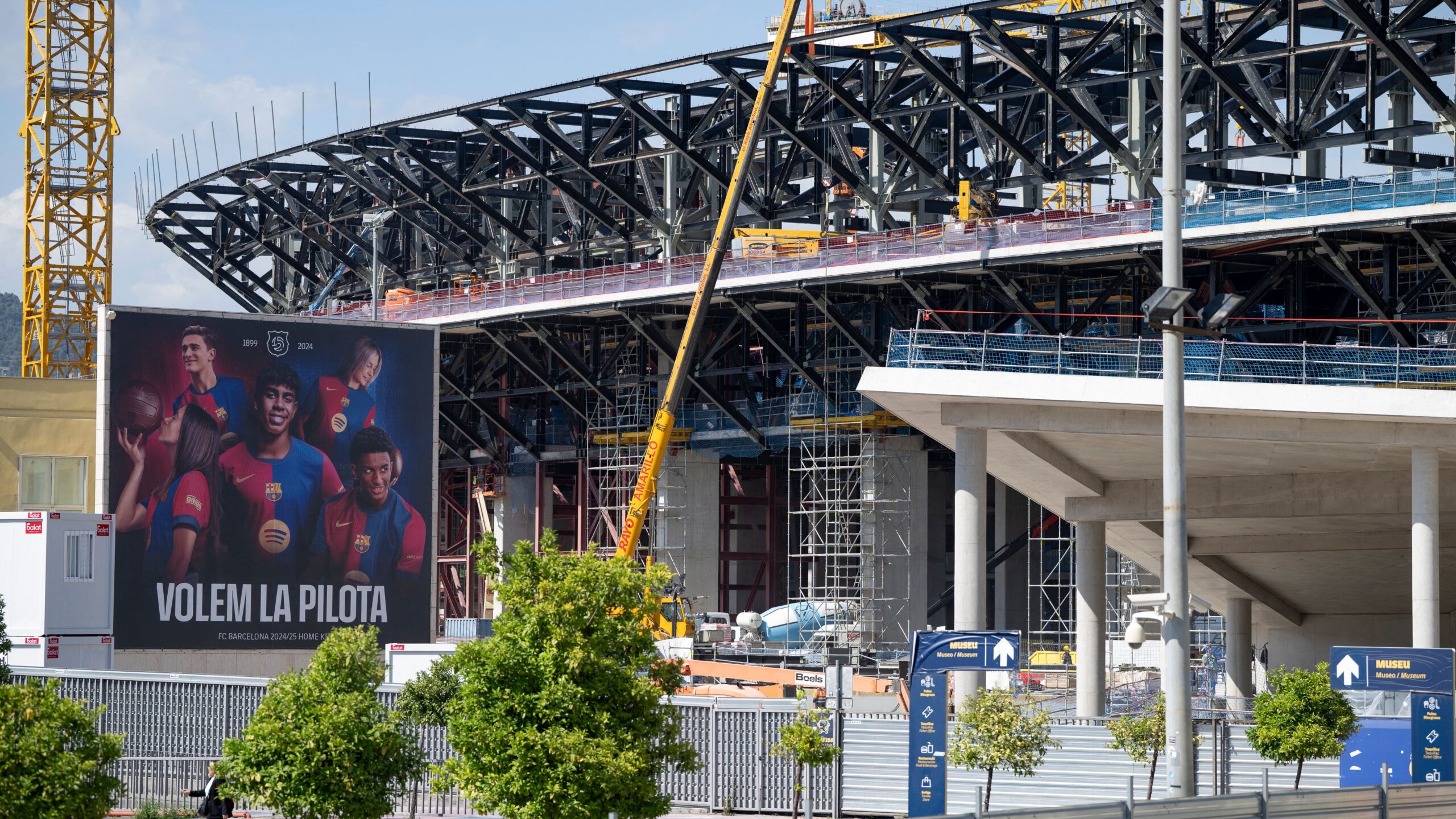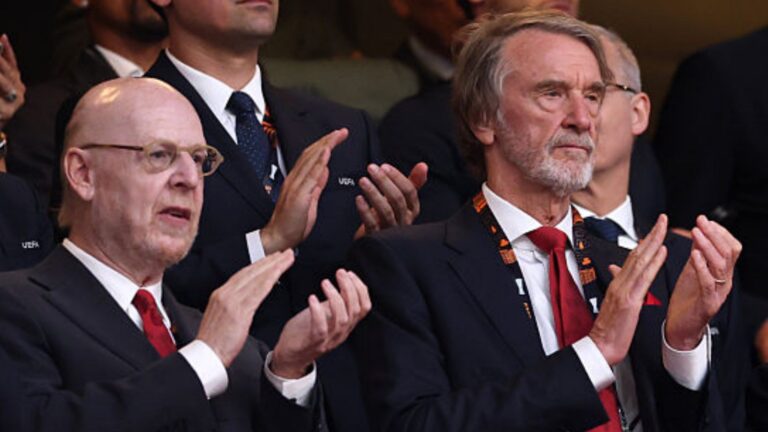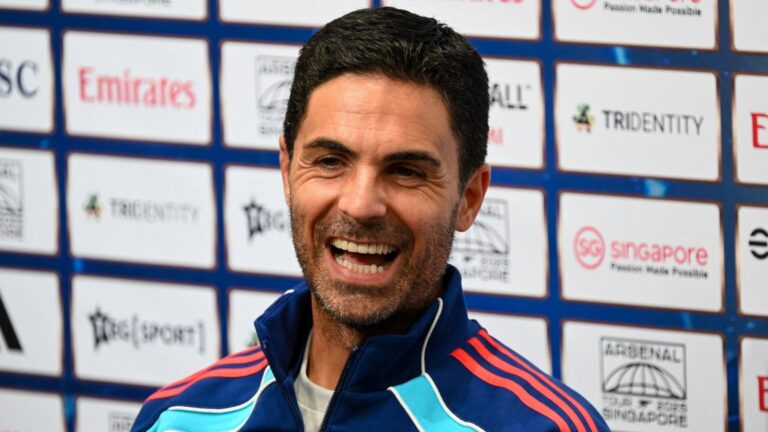Barcelona’s Stadium Uncertainty: A Critical Backup Plan Emerges
Amid ongoing challenges with the Camp Nou renovation, Barcelona football club has wisely secured an alternative venue to avoid any disruptions. This strategic move highlights the complexities of modern stadium projects, ensuring the team remains competitive while navigating regulatory hurdles and financial demands.
- New challenges arise in Camp Nou’s transformation
- Extended use of Montjuic as a reliable alternative
- Regulatory approvals from the City Council cause setbacks



Securing a Temporary Home Amid Renovation Setbacks
This precautionary arrangement guarantees that the Spanish giants won’t be without a proper playing field if delays persist in returning to the upgraded Camp Nou. Recent reports from sources like Mundo Deportivo confirm that Barcelona has formalized a pact with Barcelona de Serveis Municipals, locking in the Estadi Olimpic Lluis Companys as their main site through late February. The agreement aligns with UEFA’s guidelines, which demand a consistent location for the initial Liga de Campeones stages and any knockout matches, drawing from the team’s prior two-year stint at this venue during the stadium’s overhaul.
Key Factors Driving the Venue Shift
The shift stems from the local authorities’ decision to withhold the Initial Use Permit in late July, preventing the club from hosting events like the Joan Gamper Trophy at Camp Nou on August 10. This highlights the fragility of Barcelona’s ambitious redevelopment efforts. While reclaiming their historic ground in Les Corts is essential for boosting income and maintaining the club’s esteemed image, avoiding violations of UEFA protocols or last-minute venue hunts is equally vital. With the revamped Camp Nou set to accommodate up to 64,000 fans-compared to Montjuic’s 50,000-the economic impact is significant, particularly as the club manages ongoing fiscal constraints. This ongoing venue dilemma illustrates the intricate balance between athletic goals, practical challenges, and budget realities in restoring a legendary football landmark.
Navigating Upcoming Matches and Potential Alternatives
Interestingly, the deal with BSM excludes their La Liga encounter against Valencia on September 14, as Montjuic will be occupied by a major event featuring artist Post Malone. In response, Barcelona is exploring options like conducting the game without spectators at Camp Nou or shifting to a certified alternative such as Girona’s Montilivi stadium. Options at Espanyol‘s facility have been dismissed due to rivalry issues. Additionally, the club has appealed to UEFA for an away fixture in their opening Champions League game to gain more preparation time, though such appeals are seldom approved by the governing body. Teams have been instructed to have equipment ready for rapid deployment if the Estadi Olimpic becomes necessary, underscoring the unpredictable nature of these arrangements.
Historical Context of the Estadi Olimpic
Situated on Montjuic hill, this stadium was first constructed for the 1929 International Exposition and later enhanced for the 1992 Summer Olympics, serving as a testament to Barcelona’s rich history in hosting global events.
The Path Forward: Timelines and Implications
The entire scenario now depends on whether municipal officials approve the Final Building Approval and Initial Use Permit before September arrives. Should these clearances come through, Barcelona might resume play at Camp Nou as soon as the Valencia match; otherwise, reliance on Montjuic could stretch into the colder months. Updated projections indicate that prolonged delays might cost the club an estimated 15-20% in matchday revenue due to lower capacities, forcing them to prioritize fan satisfaction, income optimization, and adherence to European rules while striving for top performance in competitions.
Current Situation with Camp Nou Renovation
The iconic Camp Nou stadium, home to FC Barcelona, has been at the center of ongoing renovations that have sparked significant uncertainty among fans and stakeholders. As Barcelona pushes forward with its ambitious €1.5 billion redevelopment project, delays in construction timelines have raised questions about when the team can return. Key factors like regulatory approvals, supply chain disruptions, and unexpected costs have contributed to these potential deadline issues, leaving supporters wondering if the 2024-2025 season might see the Blaugrana playing elsewhere.
This uncertainty isn’t just hypothetical; it’s a real concern for Barcelona’s management. The club has been transparent about the challenges, emphasizing that the renovation aims to modernize the stadium with state-of-the-art facilities, increased capacity up to 105,000 seats, and enhanced sustainability features. However, with construction milestones at risk, the focus has shifted to securing reliable alternatives to ensure uninterrupted matchdays.
Key Challenges in the Renovation Process
Several hurdles have emerged during the Camp Nou project. For instance, obtaining necessary permits from local authorities in Barcelona has been a lengthy process, compounded by environmental impact assessments. Additionally, the global economic climate has driven up material costs, potentially pushing back completion dates. According to recent reports from Spanish media outlets like Marca and Sport, these factors could delay the stadium’s reopening by several months, affecting high-profile matches and fan experiences.
Fans have expressed frustration on social media, with hashtags like #CampNouReturn trending as they share concerns about missing out on the historic atmosphere. This situation underscores the importance of contingency planning in sports infrastructure projects, where Barcelona’s proactive approach could serve as a model for other clubs facing similar issues.
Barcelona’s Alternative Stadium Agreement
In response to these uncertainties, FC Barcelona has wisely secured an alternative stadium agreement with the local government to use the Estadi Olímpic Lluís Companys as a temporary venue. This deal, announced earlier this year, provides a safety net if Camp Nou isn’t ready by the projected deadlines. The agreement allows Barcelona to host La Liga, Champions League, and other matches at this historic site, which has a capacity of around 60,000 and a rich legacy from the 1992 Olympics.
This strategic move ensures continuity for the club, players, and fans, minimizing disruptions to the season. Terms of the agreement include flexible scheduling and potential upgrades to the venue to align with Barcelona’s high standards, such as improved seating and fan amenities. By locking in this option, the club demonstrates foresight, drawing on lessons from other teams that have navigated stadium transitions successfully.
Details of the Estadi Olímpic Lluís Companys Arrangement
Under the agreement, Barcelona gains priority access to the stadium for up to two seasons if needed, with options for extensions based on renovation progress. This setup includes provisions for maintaining the club’s brand presence, such as custom branding and fan zones, to replicate the Camp Nou experience as closely as possible. Reports from official club statements highlight that this partnership is cost-effective, with shared maintenance responsibilities helping to keep expenses in check.
Benefits of the Alternative Stadium Agreement
Securing an alternative venue offers multiple advantages for Barcelona and its community. First, it safeguards revenue streams from ticket sales, broadcasting rights, and merchandise, which are crucial for the club’s financial health amid ongoing renovations. Secondly, it preserves fan engagement by avoiding long breaks in home games, ensuring that supporters can still attend matches without major travel disruptions.
From a broader perspective, this agreement promotes adaptability in sports management. For clubs worldwide, it illustrates how contingency plans can enhance resilience against project delays, ultimately benefiting stakeholders like sponsors and local businesses.
- Fan Experience Enhancement: Attendees benefit from continued access to live games, with potential for unique events at the alternative site.
- Financial Stability: The deal helps mitigate risks of lost income, allowing reinvestment in player development and youth academies.
- Community Impact: Hosting games elsewhere keeps the local economy buzzing through tourism and event-related spending.
Practical Tips for Fans During This Transition
If you’re a Barcelona supporter navigating this period of uncertainty, here are some actionable tips to make the most of it. Start by staying updated through the official FC Barcelona app or website, where fixture changes and ticket information are posted promptly. Consider purchasing flexible tickets that allow transferencias between venues, reducing the hassle if plans shift.
- Plan Your Travel: Use public transport options around Estadi Olímpic Lluís Companys to avoid traffic, and check for any road closures related to events.
- Engage with Fan Communities: Join online forums or local supporter groups to share experiences and get real-time advice on attending matches.
- Explore New Perks: Take advantage of any special promotions, like discounted food stalls or exclusive merchandise at the alternative stadium.
These tips can help turn potential inconveniences into enjoyable opportunities, fostering a sense of community among fans.
Case Studies from Similar Stadium Projects
Looking at other clubs provides valuable insights. For example, Tottenham Hotspur in the Liga Premier faced delays with their new stadium and temporarily used Wembley Stadium. This move allowed them to maintain their schedule while building a world-class facility, ultimately boosting their global profile. Similarly, Juventus in Italia played at the Allianz Stadium’s predecessor during renovations, using the experience to refine fan services and operational efficiency.
These case studies show that while transitions are challenging, they can lead to long-term gains, such as improved infrastructure and fan satisfaction-lessons Barcelona is likely applying now.
First-Hand Experiences from Supporters
Many fans have already shared their stories online about attending games at alternative venues. One supporter on Reddit recounted how watching Barcelona at Estadi Olímpic felt like a fresh chapter, with the smaller crowd creating a more intimate atmosphere despite the change. Another fan from a Barcelona forum described the ease of transition, noting that the club’s communication made adapting straightforward.
These personal accounts highlight the resilience of the fanbase and how proactive measures from the club can ease uncertainties, turning potential setbacks into memorable moments.










